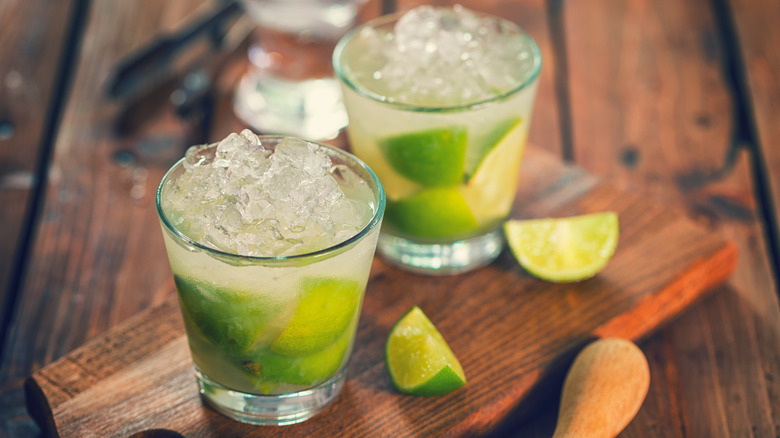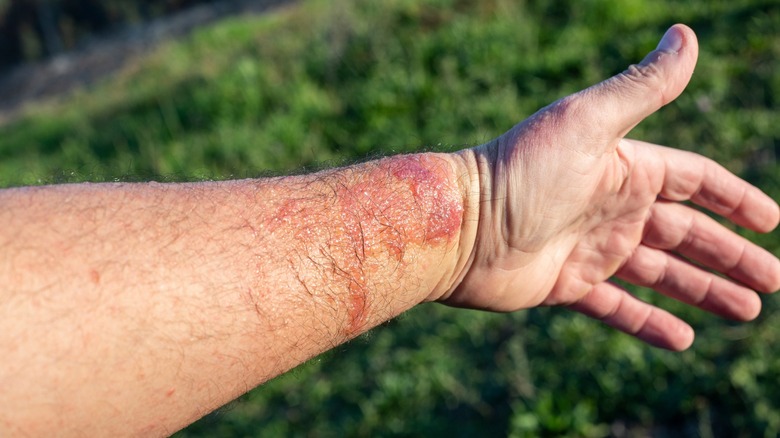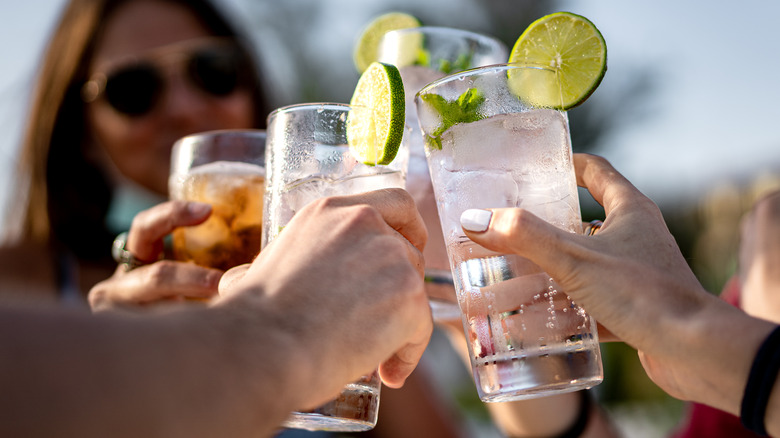Lime-Heavy Cocktail Drinkers Could End Up With Margarita Burn
Lovers of margaritas, mojitos, and other cocktails made with lime should be vigilant when enjoying a drink in the sun this summer. A recent viral TikTok video by user @pretty.frowns has brought attention to a relatively common but misunderstood skin condition known as phytophotodermatitis. This condition, which causes the skin to become irritated after coming into contact with certain chemicals found in plants — and then getting exposed to sunlight — is often cheekily referred to as "margarita burn" or "lime disease." The painful and stinging result serves as an annoying and sometimes painful reminder to take precautions in the sun, even when you're at your most relaxed on a chill summer day.
However, limes aren't the only culprits in causing phytophotodermatitis. Any substance containing a natural chemical compound called psoralen can cause this reaction when exposed to ultraviolet (UV) rays from the sun. Other foods containing this substance include celery, wild parsley, carrots, and citrus fruits of all kinds, although limes and bergamot oranges tend to be the most common offenders. Luckily, the phenomenon often looks worse than it feels, as the burns typically aren't permanent or painful enough to cause major issues. Still, no one wants a sunburn, so avoid preparing foods with lime or other psoralen-containing ingredients in direct sunlight.
What's the deal with phytophotodermatitis?
In the chemical reaction that triggers phytophotodermatitis, the irritant psoralen — which is found in lime juice or other foods containing the compound — acts as a sort of reverse sunscreen. Instead of shielding against sunburn, it speeds up the burning process. This reaction is particularly tricky because of its deceptive nature. The rash's unspecific appearance, along with the fact that most cases occur outside when having fun in the sun, often leads to it being mistaken for other dermatological issues such as regular sunburn, allergies, or even poison ivy. In fact, a bulk of cases occur when people brush against nonedible weeds containing psoralen while hiking through wooded areas.
Since phytophotodermatitis is exclusively a dermatological issue — meaning that it only affects your skin — the reaction only occurs where sunlight reaches. This specificity can result in irritation in unique locations, sometimes becoming conspicuously evident around the lips, and may leave behind telltale evidence that you were sipping on a margarita in the sun.
How to prevent and treat margarita burn
The easiest way to prevent phytophotodermatitis is to simply avoid basking in the sun when handling anything involving lime — but avoiding margaritas and mojitos on the beach is easier said than done. If you find yourself wanting to relax with a day drink, try to seek out shade and wash your mouth and hands afterward with water or wet wipes. In the case of squeezing limes into drinks or over dishes like creamy guacamole, ceviche, or marinated meat, it's never a bad idea to wear gloves in the sunlight.
If you do think you've contracted margarita burn, it's not the end of the world. Your dermatologist can prescribe a topical steroid ointment that can help with lessening the severity of the inflammation. In particularly intense cases of phytophotodermatitis, blisters can form. Never pop these, and follow your doctor's advice in case of infection. Although phytophotodermatitis won't last forever, the darkened blotches of skin called hyperpigmentation it leaves behind can take a while — sometimes even months — to clear up. You can aid the healing process by keeping the exposed skin covered from the sun with bandages or clothing.



